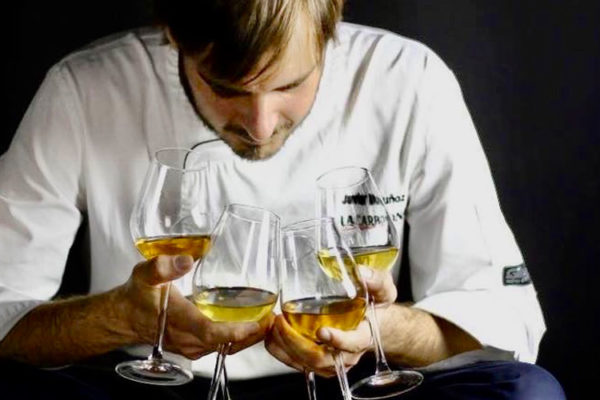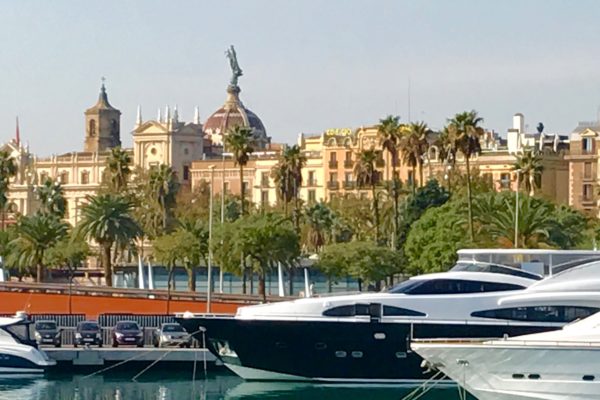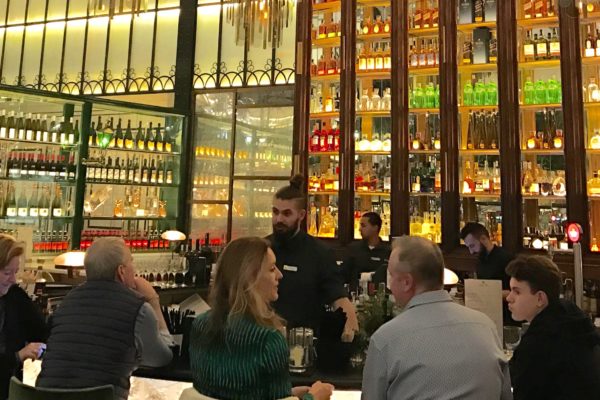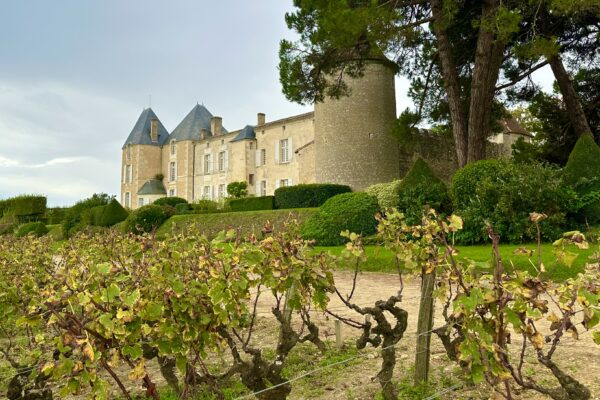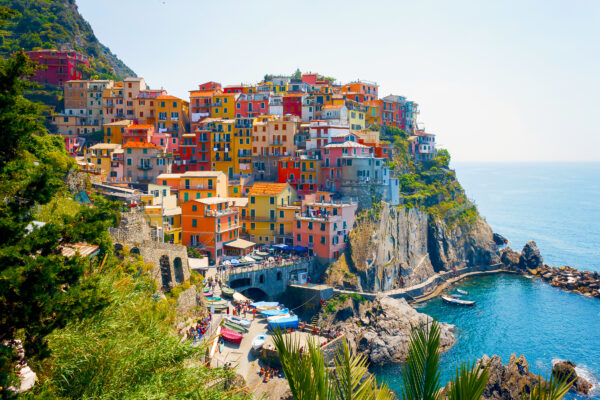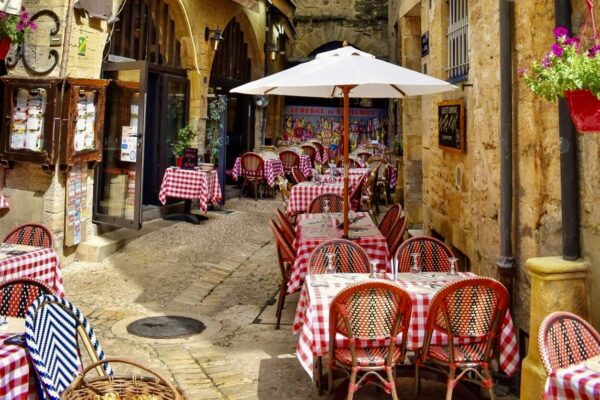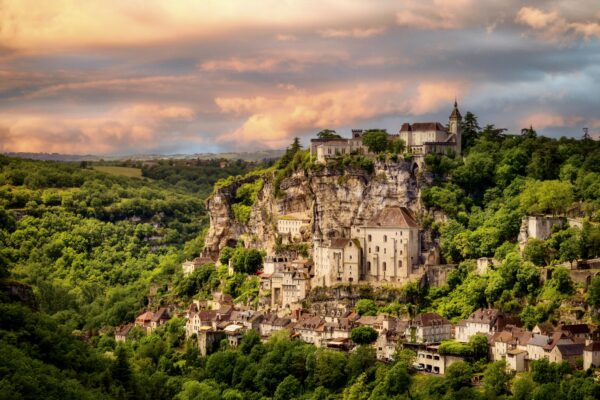San Sebastián: Basque Belle Époque
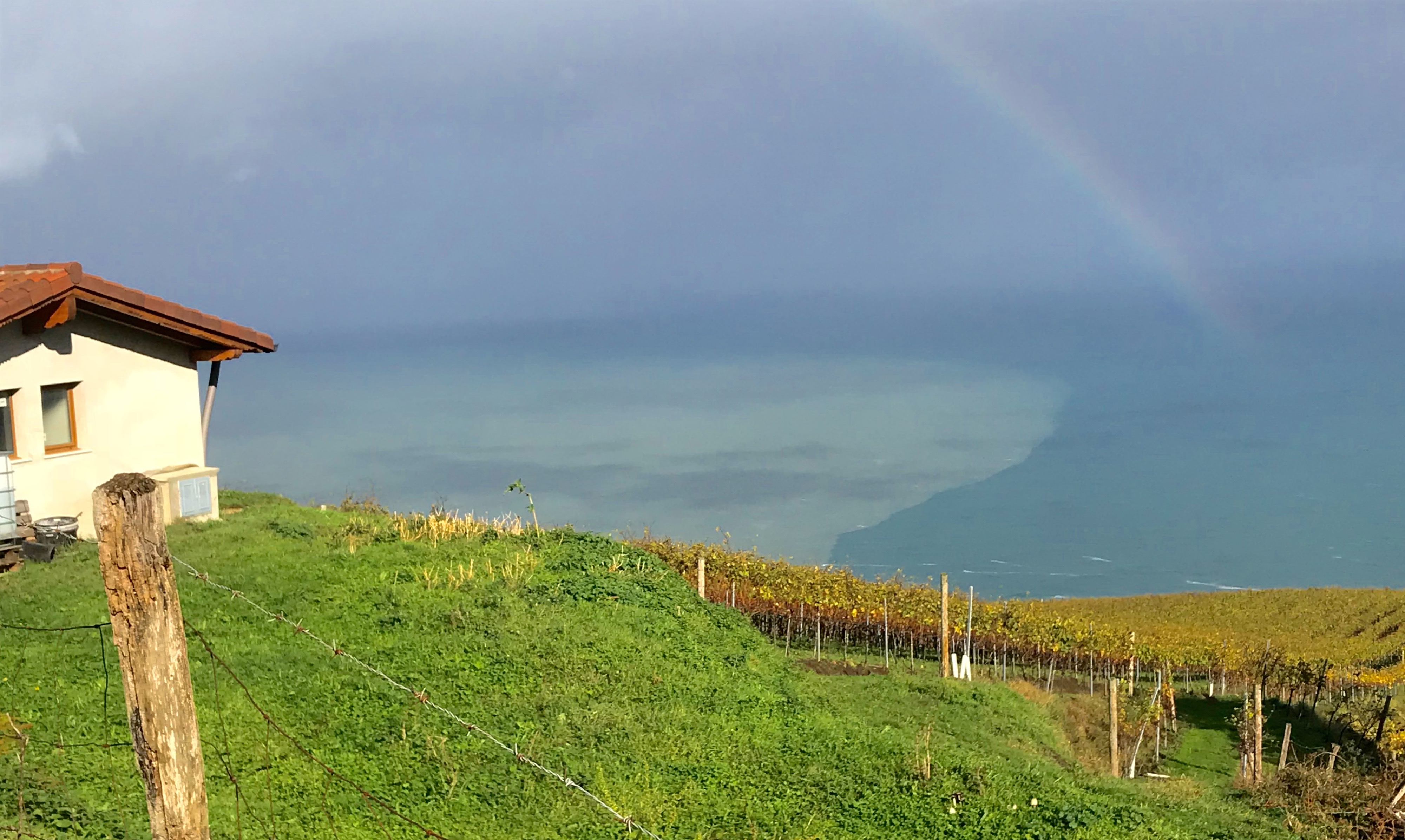
Text and photos by Marla Norman, TCO Publisher
Crossing into Spain, from southwestern France, the terrain seems to erupt before our very eyes. The Pyrenees stretch out some 1,000 meters (3,280 feet) over our heads. At the same time, we notice lush gardens and pastures — electric-green swaths along the lower hillsides. Another few minutes later, the sunny weather turns to drizzle. Now we understand the extraordinarily green gardens.
In spite of its reputation as a seaside beach resort, San Sebastián is one of the wettest regions in Spain, with precipitation over 250 days of the year. We continue through the wooded landscapes and twisting roads until the Atlantic Ocean spreads out before us. The vibrant blues contrast with the rich greens and an enormous arched rainbow is suspended over the entire bay.
PINTXOS & TXIQUITEO
The best way to get acquainted with San Sebastián and its Basque culture, is to dive into the food. Our first stop is Gandarias, a beloved institution in the city’s Parte Vieja (Old Town). We walk along the bar, eyeing all the delectable plates or pintxos (PEEN-chos) as they’re called: Mushroom Tarts with Pata Negra Ham, Peppers stuffed with Crab, Anchovies & Prawns, Cheese & Mushroom Risotto, Artichokes, Beef Cheeks — the choices are endless. We make a selection and enjoy one plate after the other, while chatting with equally enthusiastic diners.
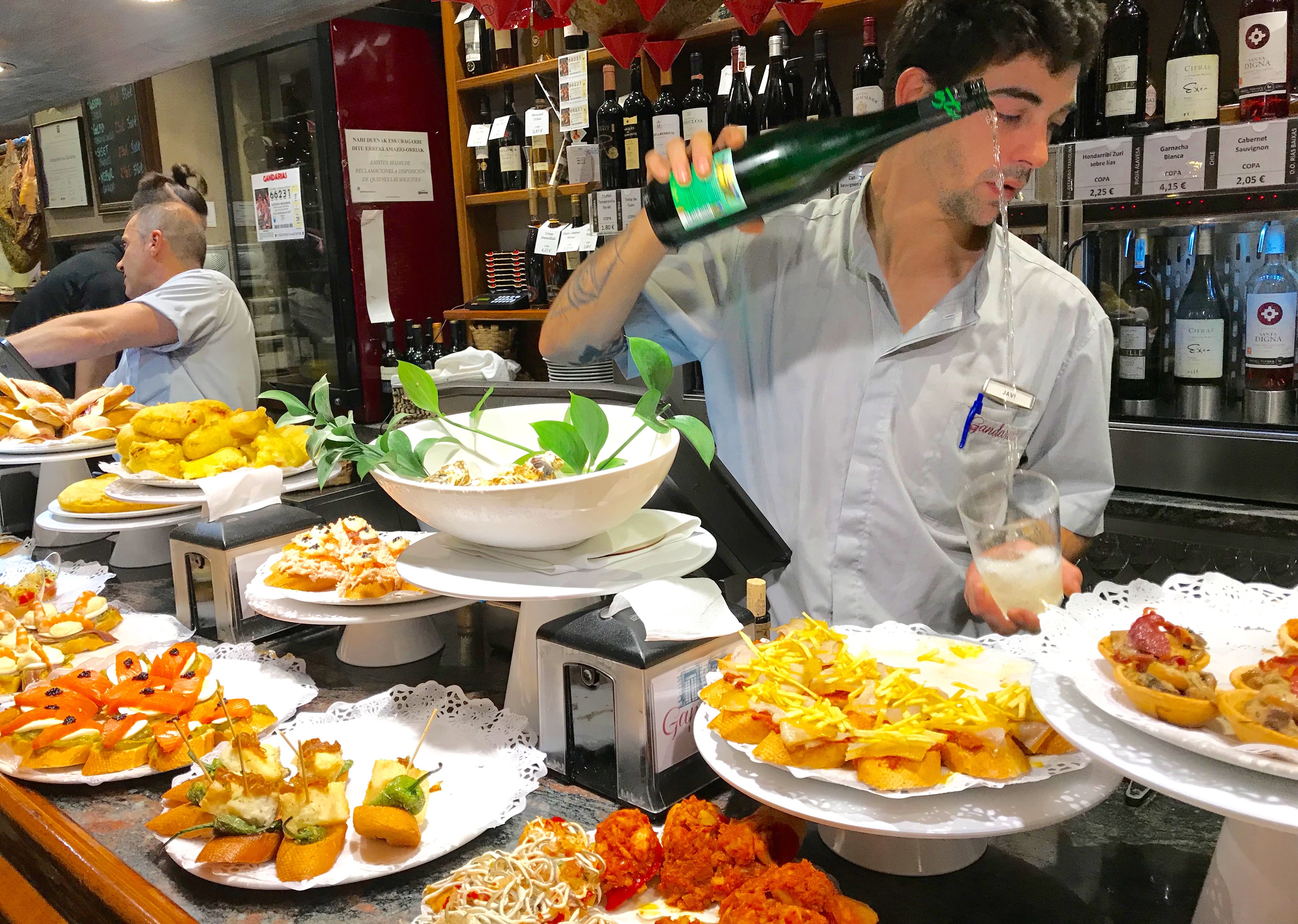
At Gandarias, waiters pour local wines, called txakolí amidst tasty small plates or pintxos.
Waiters juggle multiple small plates and pile on the ingredients. Meanwhile, bartenders pour local wines, called txakolí (cha-koh-LEE), with theatrical flare, extending their arms high over a glass, expertly pouring without spilling a drop. It’s all part of a great spectacle and makes the food even tastier.
From Gandarias, we move on to La Cepa. We are officially txiquiteo (chih-kee-TAY-oh) otherwise known as bar hopping or pintxos sampling. The bar and dining tables at La Cepa are packed. We squirm into a spot and again look over the appealing choices: Chorizo & Black Sausage, Potato Omelets with Anchovies, spicy Cod in chunky Tomato Sauce, Calamari with Rice.
Aitziber Pollos, an energetic young woman with curly hair piled on top of her head serves us. We chat with her while she slices baguettes like a machine, one after another to keep the pintxos coming. She laughs as we attempt to pronounce her name: Aitziber. “Basque is another world,” she explains sympathetically. Her brother Arkaitz is at the stove firing up six pans simultaneously. Meanwhile happy customers keep pouring in. It’s a wild and wonderful scene!
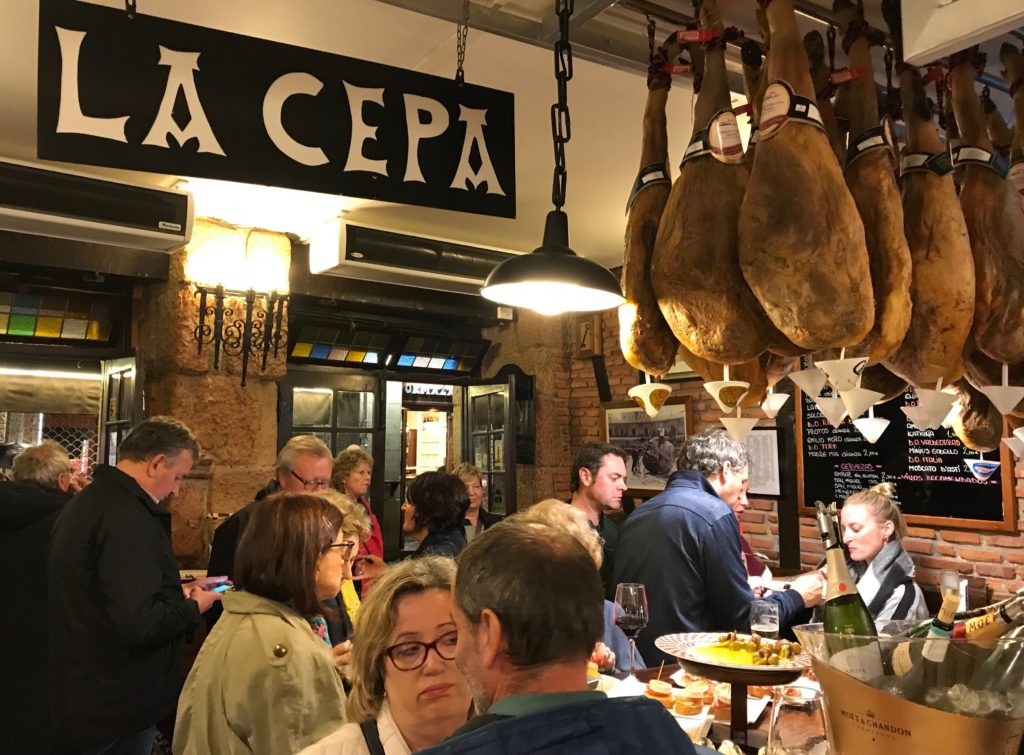
Lively crowd at La Cepa.
Later, the rains begin again. But this time it’s a full-throttle deluge. We try to hail a taxi, but the driver ignores us and speeds on. We attempt several times more, all with the same frustrating result. Meanwhile our umbrellas are collapsing under the relentless downpour. Eventually a taxi stops to explain (quickly) that drivers aren’t allowed to stop. By city ordinance, they may only queue at Taxi Stations. So, a TRAVEL NOTE: In Parte Vieja look for Taxi Stations on Alameda del Boulevard and Avenida de la Libertad. (See the map at the end of this article.)
SO MANY MICHELIN STARS!!!
For those who might doubt the extraordinary culinary scene in San Sebastián, here’s an astonishing fact: This city of 180,000 claims nine Michelin-star restaurants. And three of them are 3-star!!! There’s no place on the planet that quite compares. If you love food, this is your city. Here is the stellar list:
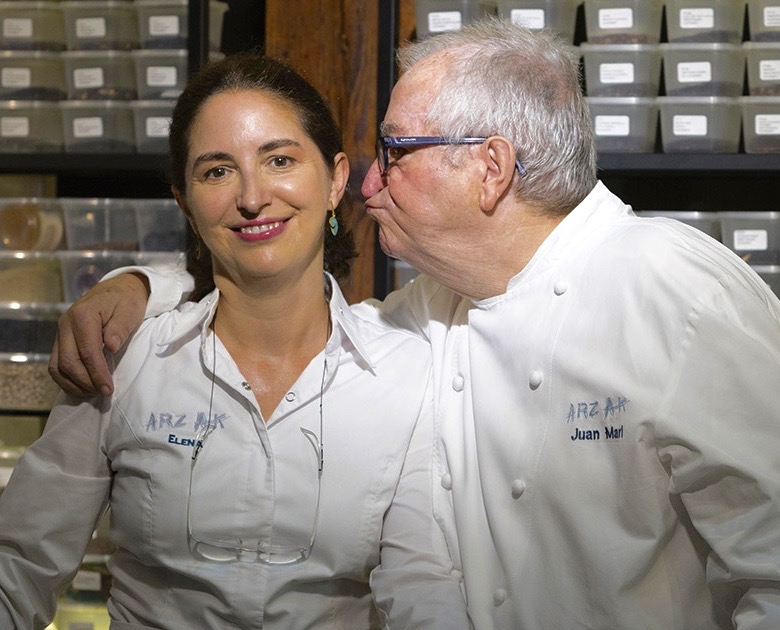
Juan Mari and Elena Arzak. Photo courtesy of Arzak.
ARZAK *** 3-Star Michelin
Alcalde José Elosegi Hiribidea, Alto de Miracruz
Of all the renowned restaurants in the Basque region, Arzak is perhaps the most celebrated. Juan Mari Arzak and his daughter Elena have been featured in numerous food films. The kitchen repartee between the two of them is as legendary as the food! But it’s evidently an indispensable ingredient, since the word most often used to describe their menu is “perfection.”
AKELARRE *** 3-Star Michelin
Paseo del Padre Orkolaga 56, Igueldo
Pedro Subijana is noted for both his traditional and avant-garde dishes, such as Mustard Ice Cream and Pop Rocks. Cooking classes are also available.
MARTIN BERASATEGUI *** 3-Star Michelin
Loidi Kalea 4, Lasarte-Oria
Berasategui has earned more Michelin stars than any other Spanish chef. In addition to the three stars for his restaurant in San Sebastián, he holds three at Restaurante Lasarte in Barcelona and another two at M.B. in Tenerife.
MUGARITZ ** 2-Star Michelin
Aldura Gunea Aldea 20, Errenteria
Chef Andoni Luis Aduriz
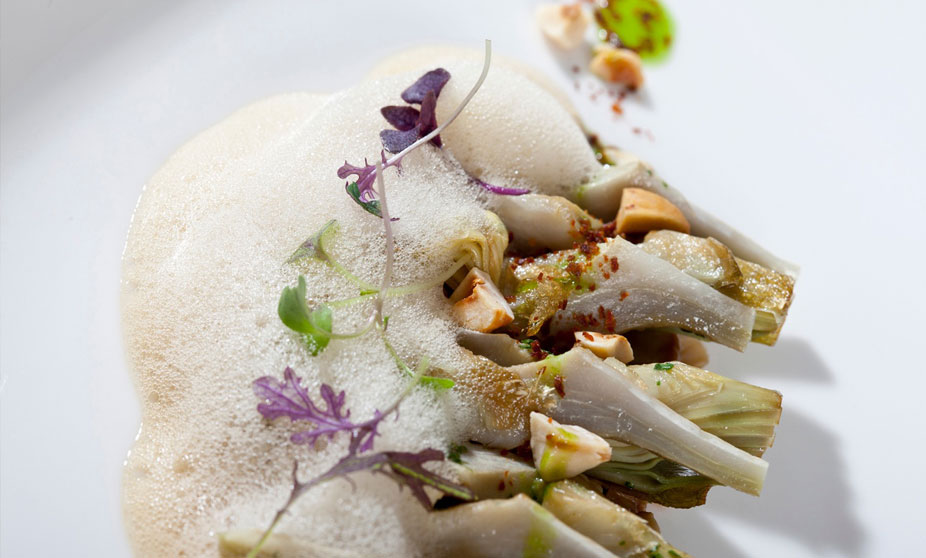
Superbly plated seafood. Photo courtesy of Alameda.
ALAMEDA * 1-Star Michelin
Minasoroeta Kalea 1, Hondarribia
Chefs Mikel, Kepa and Gorka Txapartegi
ELKANO * 1-Star Michelin
Herrerieta Kalea 2, Getaria
Chef Aitor Arregi
KOKOTXA * 1-Star Michelin
Calle del Campanario 11, Donostia
Chef Daniel López
MIRADOR DE ULIA * 1-Star Michelin
Ulia Pasealekua 193, Donostia
Chef Rubén Trincado
ZUBEROA * 1-Star Michelin
Araneder Bidea, Ugaldetxo
Chef Hilario Arbelaitz
In addition to these award-winning restaurants, we can also report on several excellent and undoubtedly more affordable alternative$$$.
SALTXIPI
Ategorrietako Galtzada Zaharra 3, Donostia
We go to Saltxipi for the seafood — a San Sebastián specialty, after all. But the dish we really love is a plate of chunky wild mushrooms in a garlicky sauce with a buttery fried egg. Almost like a fillet, the mushrooms are tender and beefy. The egg adds an extra dollop of richness. The clams, monkfish and hake we have as main courses are also excellent.
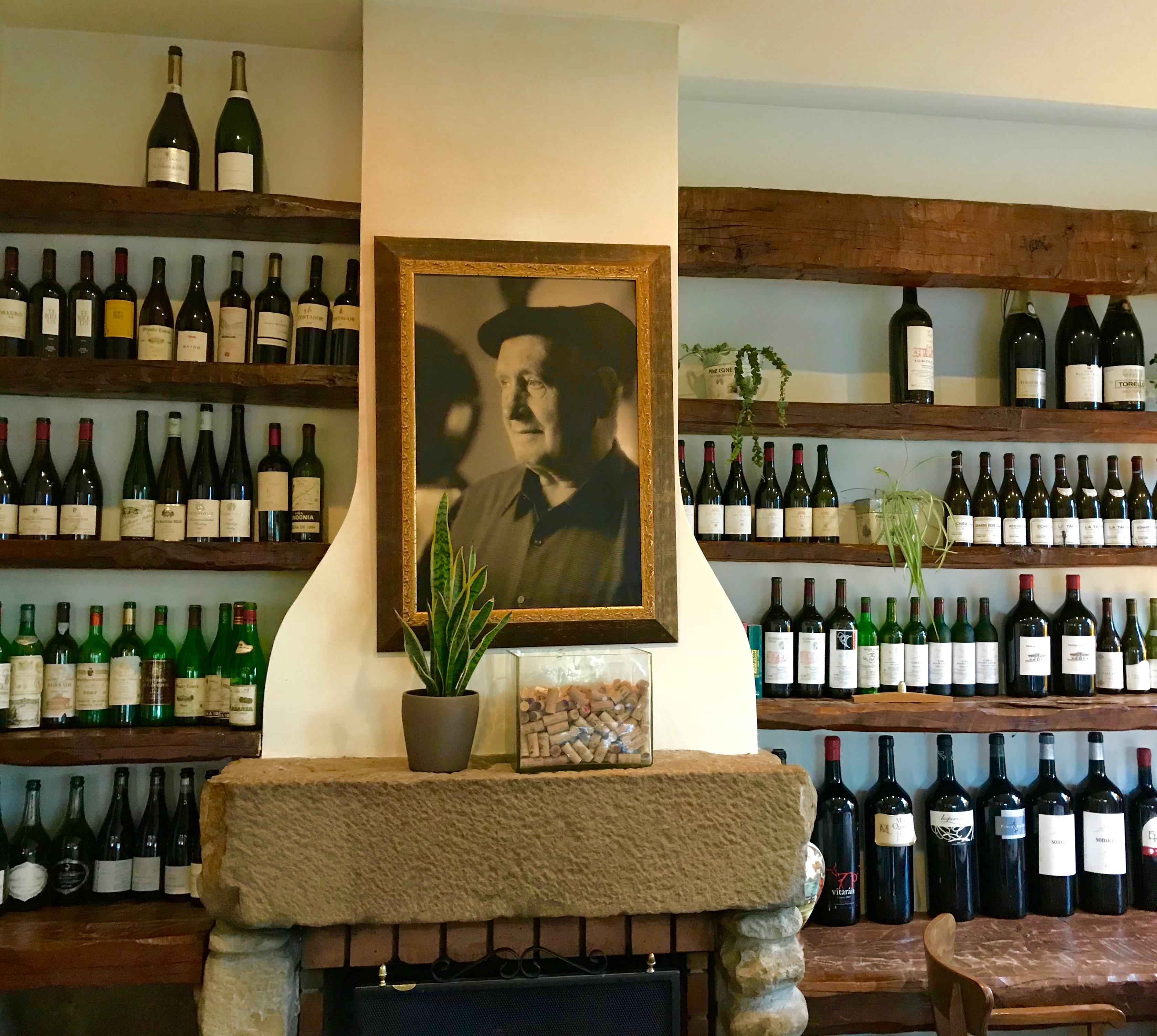
Saltxipi’s wine list is outstanding. A portrait of the restaurant’s original founder hangs on the wall.
Another wonderful surprise is the wine list. Gorka Ortega, who with his father runs the restaurant, helps us select some rare and interesting wines: Fulcro, a lovely mineral Albariño and Ximénez-Spínola, a velvety, nutty Pedro Ximénez — the best, richest dessert imaginable.
Saltxipi is tucked on a side street off a major boulevard, somewhat under the radar, but don’t let that deter you. The solid menu, family atmosphere and great wine list are the perfect combination. Another plus, Saltxipi is open year round and on Sundays.
CASA UROLA
Fermin Calbeton Kalea 20, Donostia
Recently listed by the London Guardian as one of the 10 Best Restaurants in San Sebastián, Casa Urola may well be on its way to a Michelin star as well. This landmark restaurant, located in the Old Town, was first opened in 1956. The current chef, Pablo Loureiro, is the grandson of the original founder. The menu offers a superb selection of traditional Basque dishes with numerous seafood specialties.
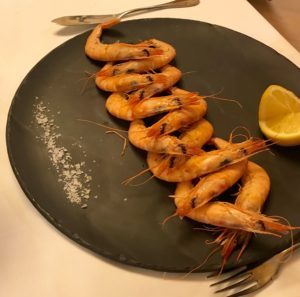
Perfectly grilled prawns at Casa Urola.
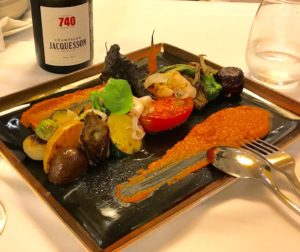
Vegetables with Squid and Romesco Sauce.
Our starter course, Grilled Shrimp and Vegetables with Squid and Romesco Sauce are fresh and delectable. The Romesco has just enough tangy spice. For main courses, the Wild Turbot is incredibly flavorful and sweet; Luismi Entrecote with Piquillo Peppers is savory and perfectly cooked — simply melts-in-your-mouth. Additionally, the Casa Urola wine list is extensive, with many excellent well-priced vintages. Our Jacquesson Champagne went beautifully with the meal. Salud!
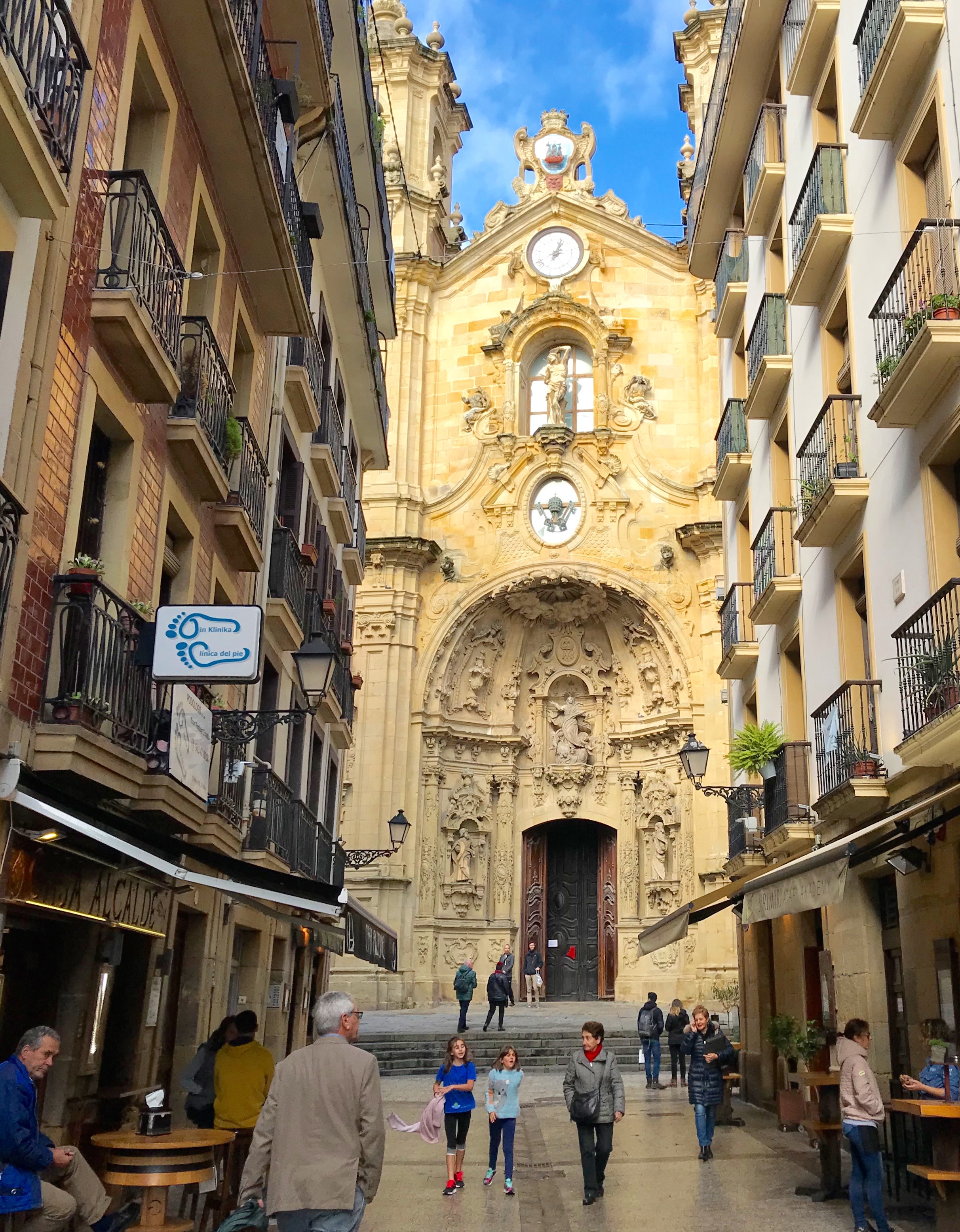
Koruko Andre Mariaren Basilika (Basilica of Our Lady of the Choir)
ARCHITECTURAL TREASURES
In between xiquiteo, we explore the Gothic buildings of Parte Vieja as well as the stunning Belle Époque hotels and modern architecture within newer neighborhoods.
Koruko Andre Mariaren Basilika (Basilica of Our Lady of the Choir) is at the foot of Monte Urgull, just across from Monte Igueldo. The 18th century church sits so snuggly against the base of the mountain, it seems to be cut directly from the rock.
The facade is lavishly decorated in baroque style. Two towers frame a massive entrance. An arrow-riddled Saint Sebastian is positioned just above the main arch. The Basilica’s interiors are peaceful and more modest in design.
Historically and architecturally fascinating is the Kursaal Batzar Jauregia (Kursaal Congress Center and Auditorium), on Gros beach and the Urumea River. An elegant palace in the early 1900’s, the property housed a casino, restaurant and 859-seat theater. In 1972, the building was razed and the site remained empty until 1996, when Spanish architect Rafael Moneo designed the modern cube-shaped structure now standing.
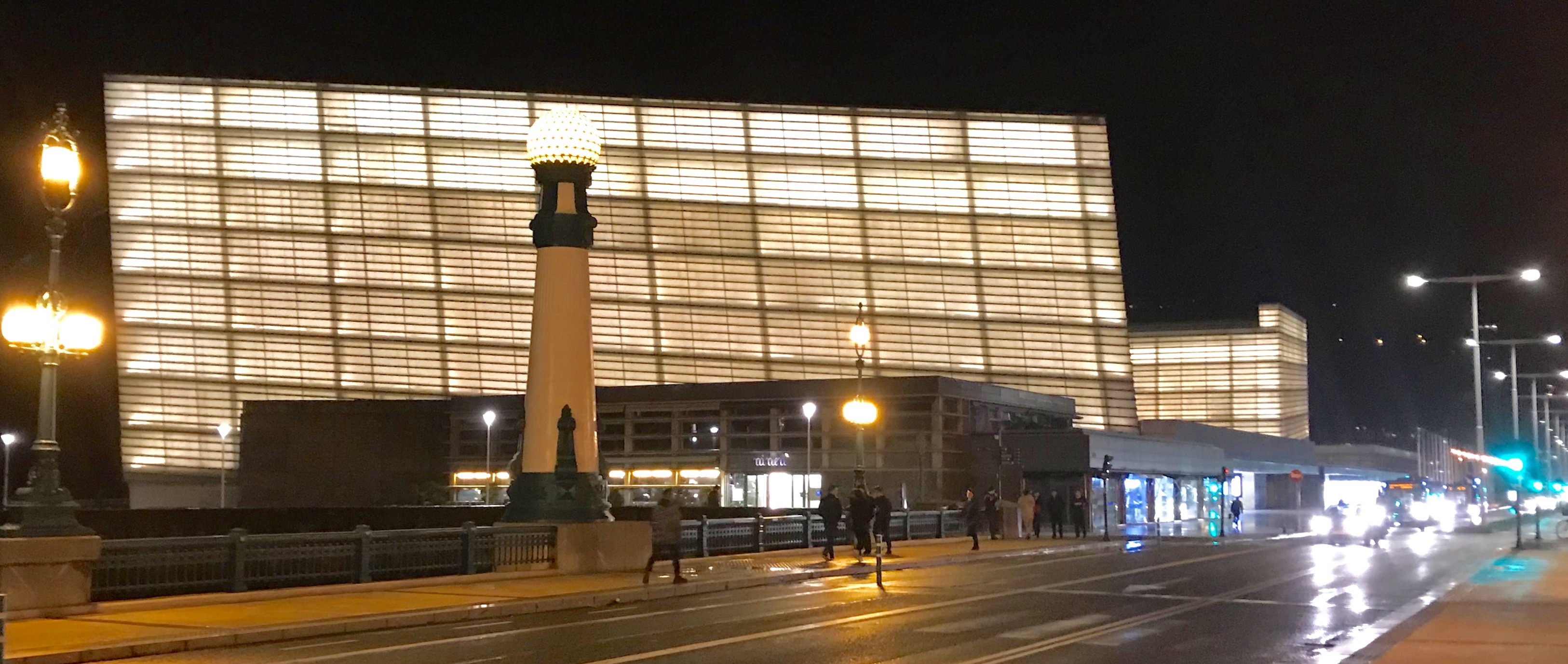
Illuminating the night – Kursaal Congress Center and Auditorium.
Grey and brooding during the day, the Kursaal is transformed at night with hundreds of lights illuminating the interior. The new design includes a 1,800-seat concert hall, banquet halls and exhibition rooms. The vast center is also home to the San Sebastián film festival, the largest in Spain, and the Donostia Jazz Festival.
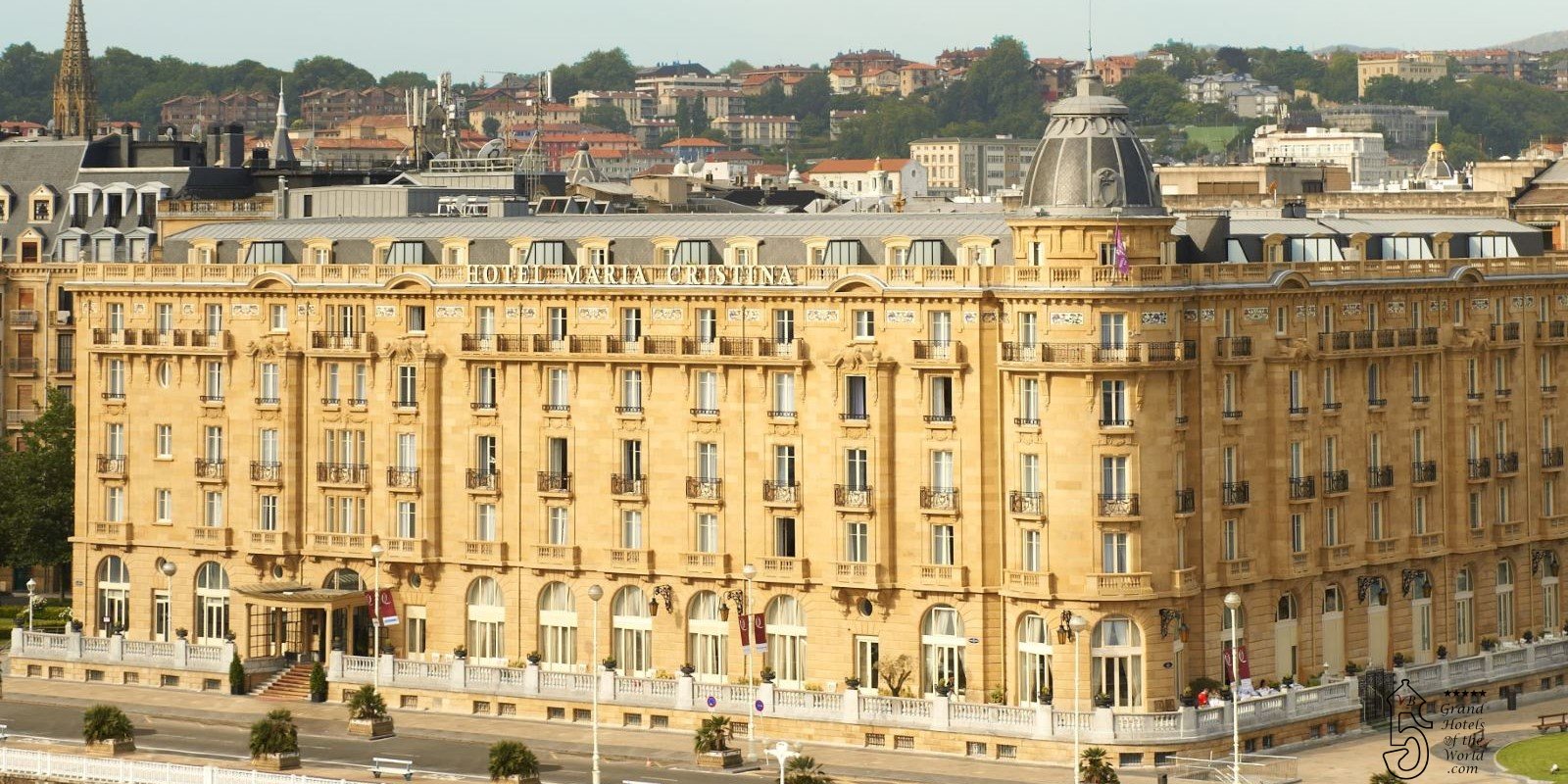
Hotel María Cristina, designed by Charles Mewes, the architect for the Ritz Hotels in Paris and Madrid. Photo courtesy of Hotel María Cristina.
Just across the river from the Kursaal is the sumptuous Hotel María Cristina. The hotel’s ornate Art Deco design is in vivid contrast to the stark, modern Kursaal. Charles Mewes, the architect for the Ritz Hotels in both Paris and Madrid, was also the creator of this property. In July 1912, Spanish Regent María Cristina, the hotel’s namesake, was the first person to officially cross the threshold. Royalty and celebrities continue to patronize the 5-star hotel.
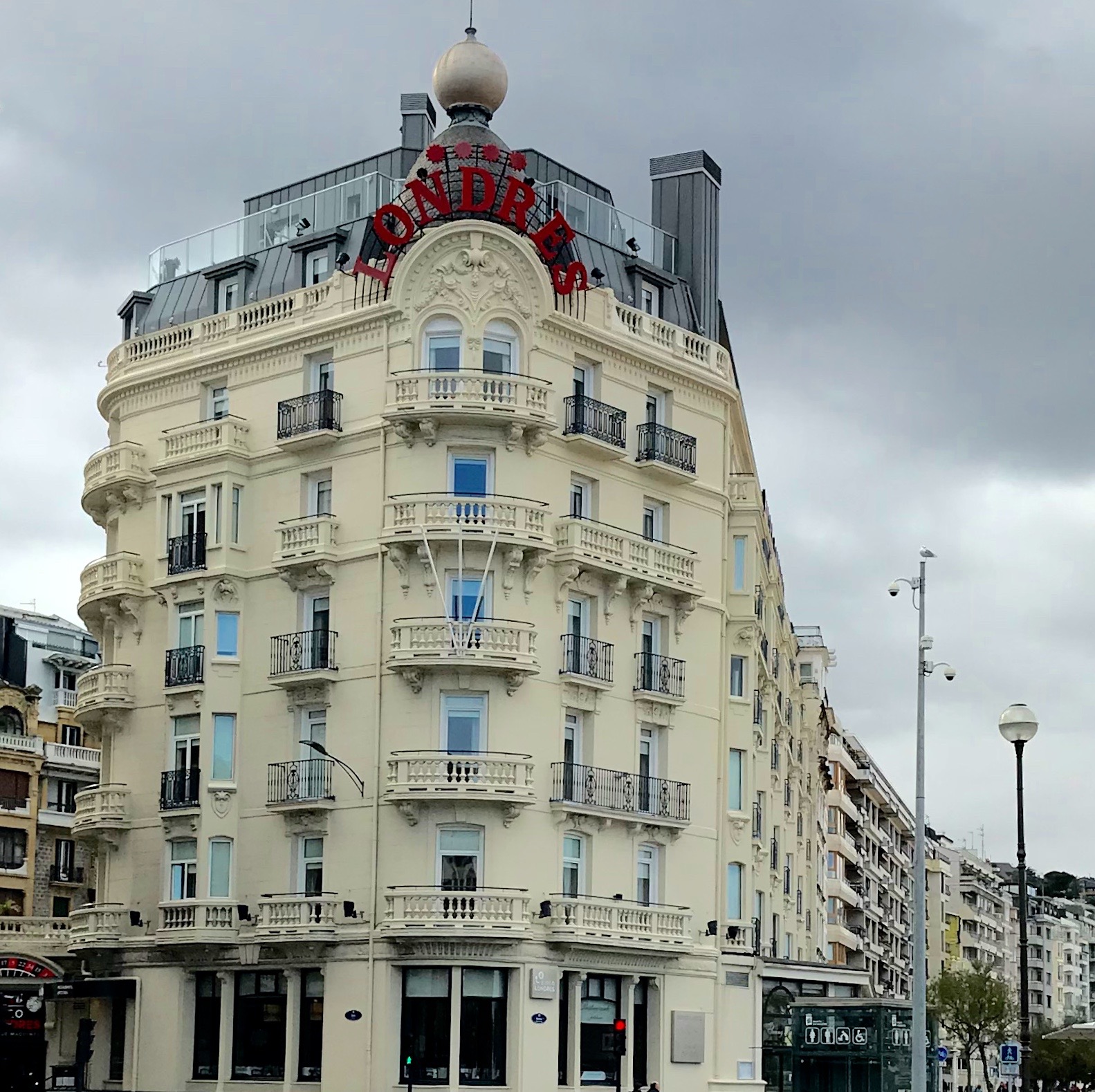
The elegant Hotel Londres y de Inglaterr, on the La Concha beachfront Promenade.
Another historic hotel, the Londres y de Inglaterra is regally situated on the beachfront promenade. Also built during the construction boom of the early 1900‘s, the property was known for its sophistication and refinement. The Prince of Wales, Toulouse-Lautrec and heads of state were frequent visitors.
During the First World War the clientele was less aristocratic, but much more colorful. Guests included expatriates, arms dealers, spies and an attractive but mysterious Dutch woman, by the name of Margaretha Geertruida Zelle, aka Mata Hari!
A few blocks off Gros Beach is the Villa Soro, a lovely Belle Époque mansion, designed by the same architect who envisioned the Londres y de Inglaterra. The first floor features an eye-catching stained glass window and carved Victorian stairway.
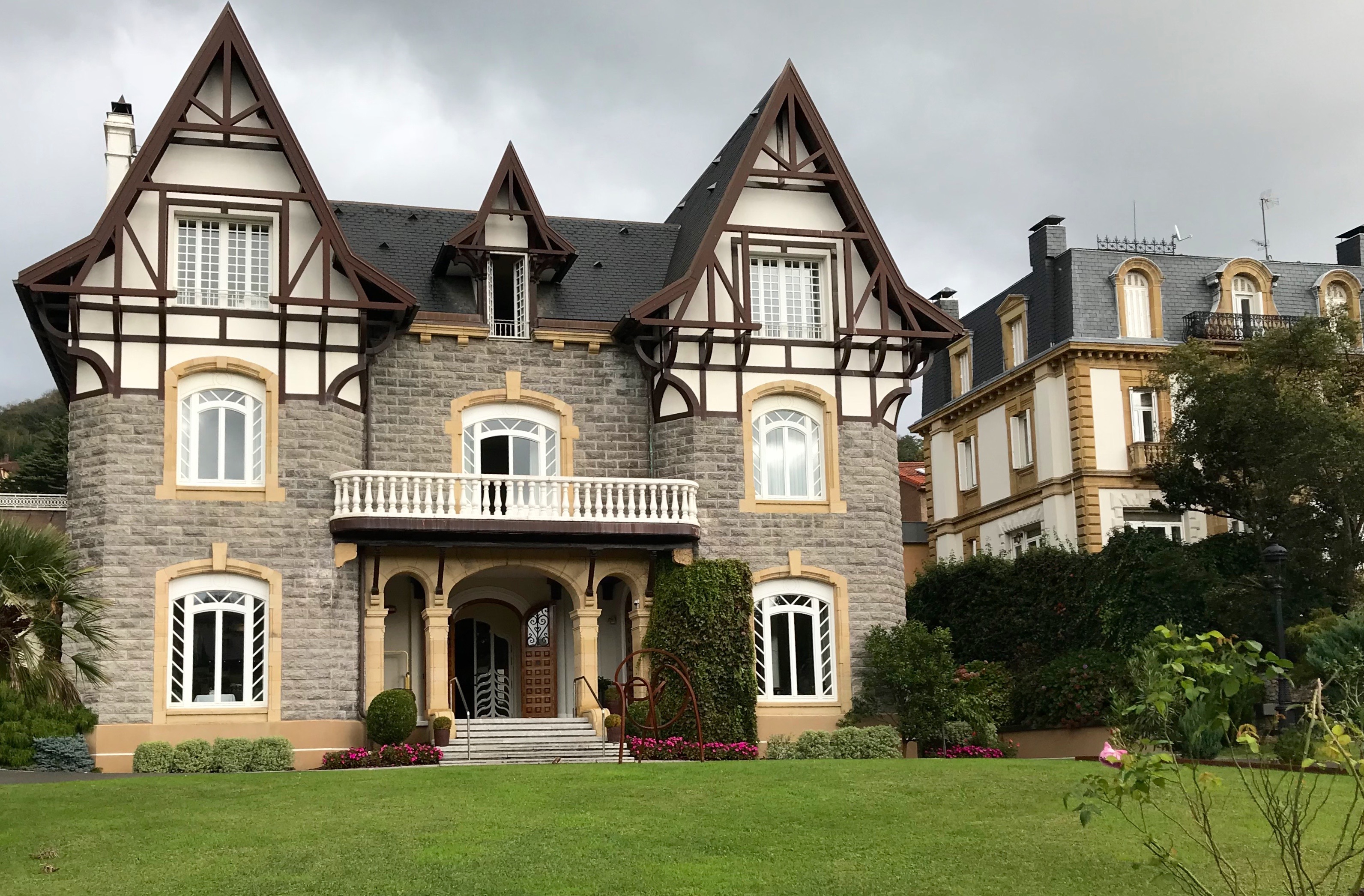
Villa Soro, lovely Belle Époque mansion, now a hotel.
More recently, the property has been converted into a hotel. Fireplaces warm sitting rooms off the main entrance and an intimate bar has been added to the lobby. We enjoy drinks by the fireplace, happy that we chose this hotel for our stay, particularly since the rain has commenced yet again….

Breakfast dining at Villa Soro.
MONTE IGUELDO & FARO DE IGELDO
The following day, after a delicious breakfast at Villa Soro, we drive along the La Concha beach, named for the perfect shell-shaped curve forming the bay. Glamorous hotels, including the afore-mentioned Londres y de Inglaterra, line the two-mile promenade. Today the beach is almost deserted. In summer, however, the population of San Sebastián will easily double, when visitors from all over Europe pour in.
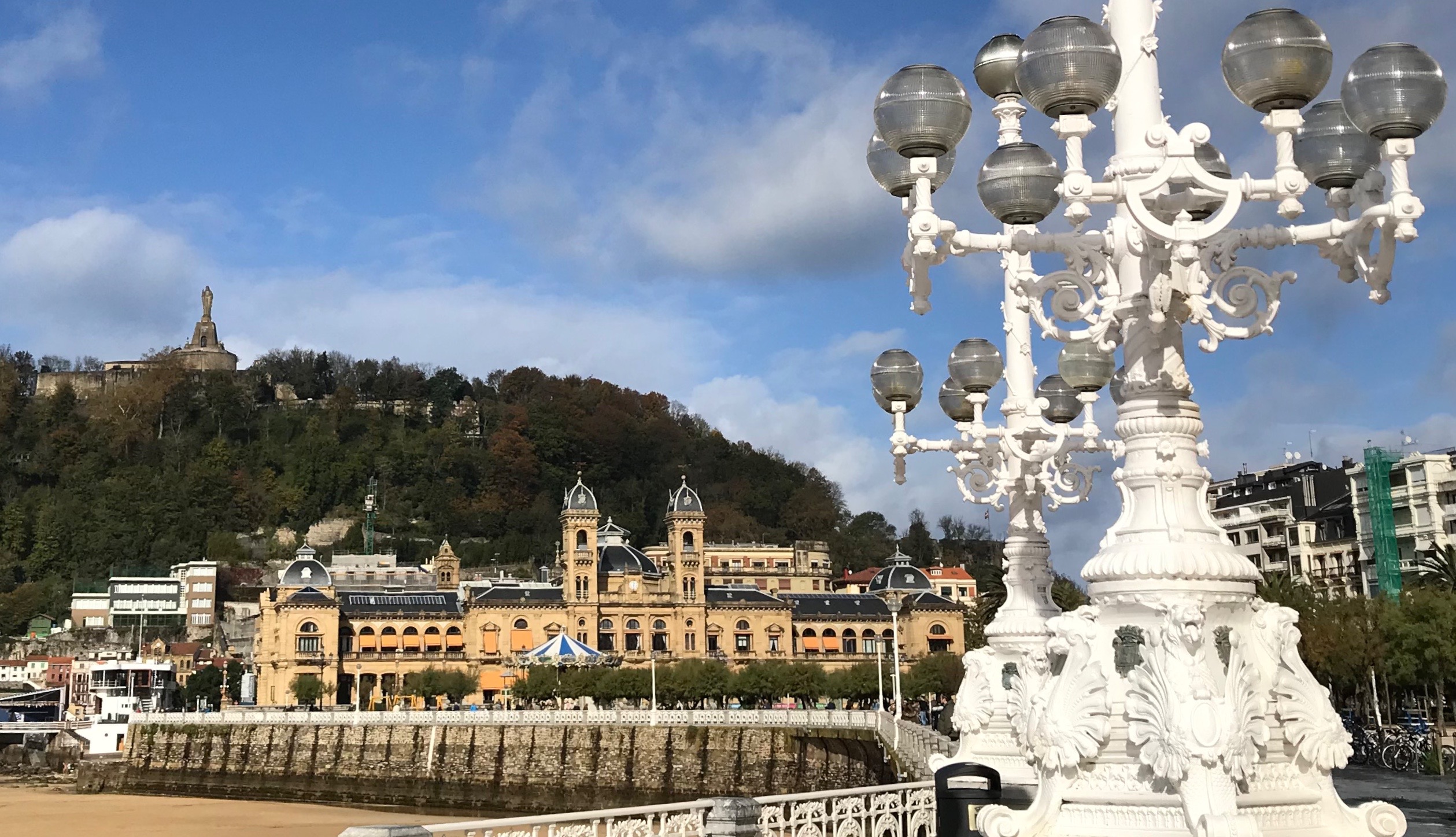
Playa de la Concha, with San Sebastián Casino in the background. High overhead is the city’s iconic statue of Christ.
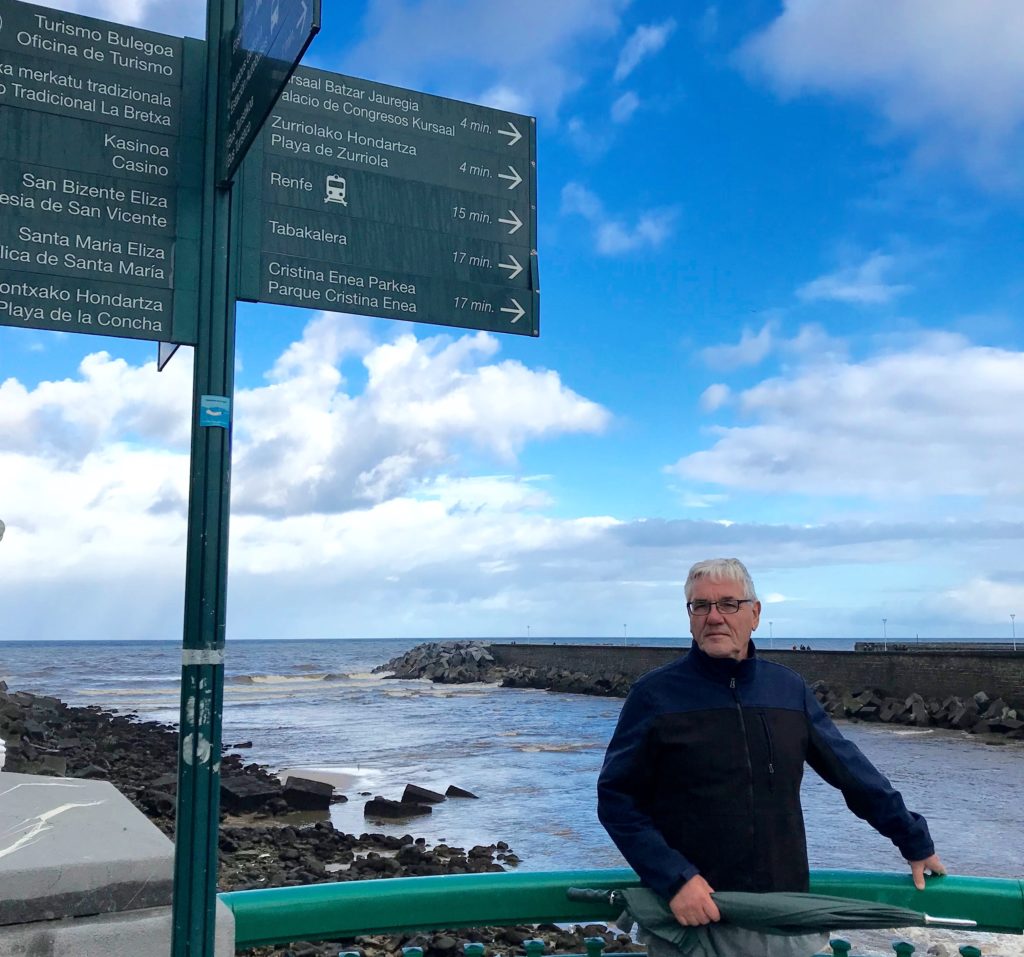
Basque – one of the world’s oldest and most perplexing languages. Michel overlooking the Bay of Biscay.
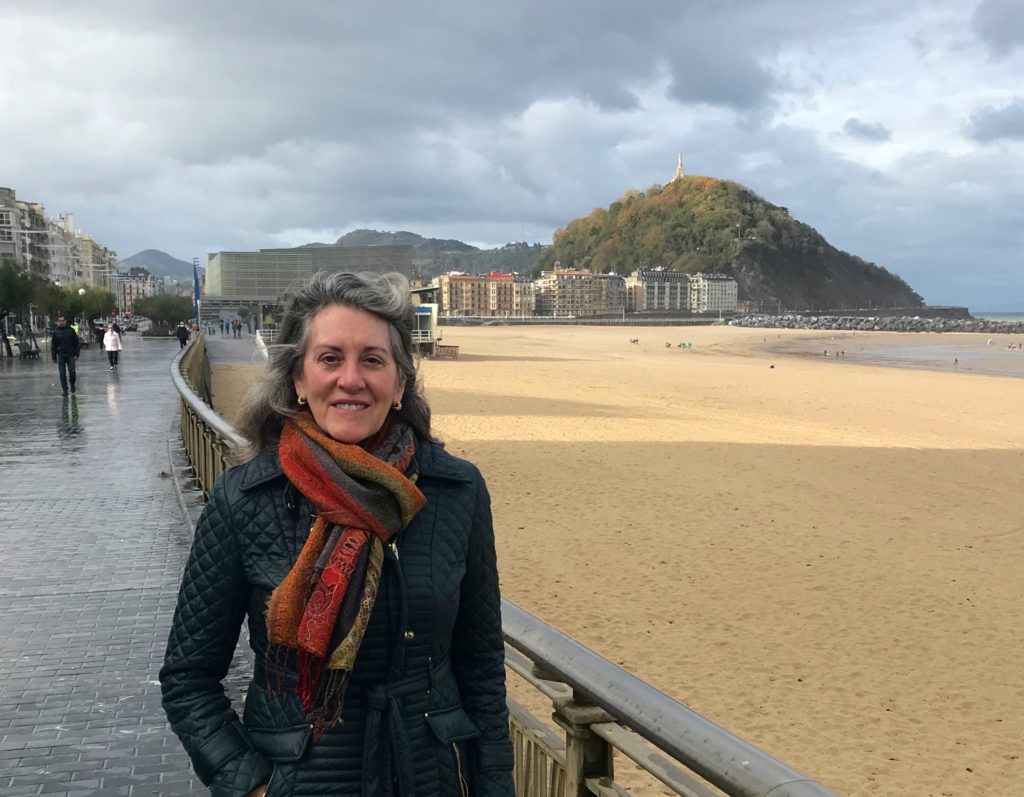
Where are the tourists? Marla on Playa de la Concha.
Continuing on, we make our way up Monte Igueldo. Meanwhile, the sun plays hide-and-seek with us, peaking in and out of clouds. Winding, twisting roads eventually lead to the top of Igueldo. We park the car and walk to Faro de Igueldo, a grand old lighthouse dating from the 16h century. Although no longer functioning, the lighthouse is visible for miles and provides sweeping views of the bay, dense forest and San Sebastián far below.
As we admire the site, a misty drizzle begins to blur the horizon. A few minutes later, a huge double rainbow emerges. One thing we’ve learned about San Sebastián — rainbows are always just a few minutes away. And so is a fantastic restaurant!





